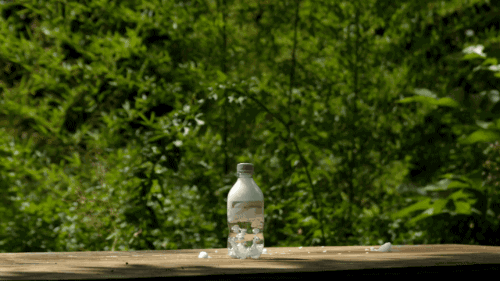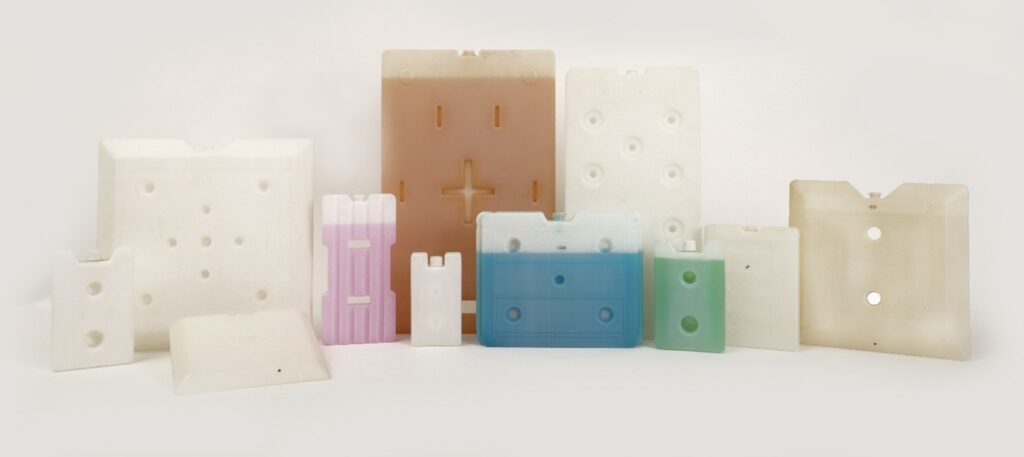On 2nd March at a café in Gurgaon, there was a disturbing incident that brought to news with visuals for 5 customers vomiting blood. Apparently, the unsuspecting customers after their meal were served these small white tablets shaped material which could easily pass off as a mouth freshener. The 5 customers were hospitalised with internal bleeding and one of them critical.


What really was this substance? Why was it kept at the table?
“Dry Ice” are used in restaurants and cafes to give that smoky effect to drinks or desserts. The staff might have confused it with mouth freshener. The injuries can be permanent, similar and more severe than frostbite., also worse is when they are ingested, it’s literally freeze-burning their stomach and oesophagus in the digestive system.
Dry ice is solidified CO² (carbon-dioxide), releasing CO² the moment it is exposed to Atmospheric pressure.
Solid carbon dioxide or dry ice is manufactured by spontaneous cooling of carbon dioxide at a temperature of around minus 79 degree Celsius under a high pressure. The gas turns in to a white solid mass which needs to be stored at high pressure. Practically, once manufactured the dry ice are moved in a very highly insulated container to slow down the rate of evaporation.
This solid mass when placed around products that need to be kept at a frozen state, helps in lowering the temperature of the surrounding as it slowly sublimates. This application makes dry ice suitable in many industries and specially the logistics industry for frozen and chilled products.


There are three major issues which could lead to a hazard in the use of dry ice;
1) Explosion if not containerised appropriately – The slow sublimation starts to build pressure in the transport or storage containers, which if closed tightly will lead to an explosion.

2) Suffocation due to saturation of CO² in the surrounding – The surrounding space inhabited by people or animals should be well ventilated as the level of CO² keeps building up. 1 kg of dry ice can easily liberate up to 541 litres of toxic gaseous carbon dioxide which can lead asphyxiation of the occupants and even lead to death.

3) Extreme low temperature – Many of the frozen products require not more than minus 20 deg C, the extreme temperature dry ice is used in carefully calculated manner to offer the net effect after dilution with the atmospheric air. At minus 79 deg C temperatures exposure to skin causes frostbite and freeze burns which can cause irreversible tissue damage.

Phase Change Materials (PCM) and its advantages over Dry ice (solid carbon dioxide)
Phase Change Materials (PCM) are chemical compositions formulated to exhibit a designed phase change point, which determines the high latent energy capacity point. For instance there are choice of PCMs to choose depending on the desired temperature control for example some of the common temperature PCMs are – 30, – 26 °C, – 23 °C, -18 °C, -15 °C, -10 °C, -5 °C and more from a range of PCM products.
Shipping with Phase Change Materials (PCMs) offers several advantages over Dry ice , but it also comes with its own set of challenges.

Advantages:
Reusable and Refreezable: Unlike dry ice or wet ice, PCMs can be refrozen and reused multiple times, making them a more sustainable option.
Precise Temperature Control: PCMs maintain a specific temperature range, which is often cold but not frozen, ensuring that sensitive shipments are kept at optimal conditions.
Bidirectional Thermal Regulation: PCMs have the unique ability to absorb and release heat, effectively regulating temperature fluctuations and preventing the contents of a shipment from becoming too cold or too hot.
Disadvantages:
Pre-Conditioning Requirements: PCMs need to undergo a pre-conditioning process, which involves freezing or refrigerating them to the correct temperature. This process can be time-consuming and may require specialized equipment.

Non-Linear Impact on Shipping Duration: Increasing the quantity of PCMs in a shipment does not necessarily linearly extend the duration for which the desired temperature can be maintained. For example, doubling the number of gel packs may not double the shipping duration.
Logistical Challenges: While dry ice is widely available and relatively easy to use for recipients, the re-freezing process of PCMs may require additional time and resources, making them less convenient for some users.
Additional Considerations:
Environmental Impact: PCMs are often considered more environmentally friendly than dry ice, as they can be reused and do not produce carbon dioxide gas upon sublimation.
Cost Considerations: While PCMs may require upfront investment in pre-conditioning equipment, their reusability can result in long-term cost savings compared to single-use alternatives like dry ice.
Customization Options: PCMs can be tailored to specific temperature requirements and shipping conditions, providing greater flexibility for businesses with diverse shipping needs.

In summary, while PCMs offer numerous benefits for temperature-controlled shipping, including reusability and precise temperature control, they also present challenges such as pre-conditioning requirements and logistical considerations. Ultimately, the choice between PCMs and traditional methods like dry ice depends on factors such as cost, convenience, and environmental impact.
Readers are invited to share the blog and join the conversation about promoting awareness and safety in the use of refrigerants. By raising awareness and advocating for safer alternatives like PCMs, we can help prevent accidents and protect the health and well-being of individuals and communities.
